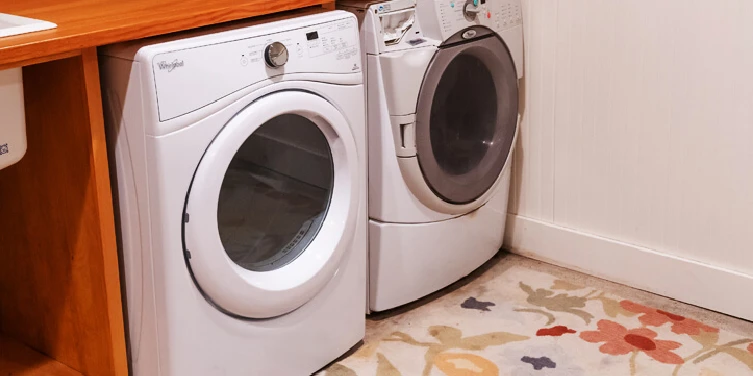The Great Debate: Front-Load vs. Top-Load Washing Machine

Who comes out on top in the fight against loads and loads of dirty laundry—a front-load or top-load washing machine? If you ask around, you may find that some people with strong opinions will try to steer you in one direction or the other.
You may recall that top-load machines ruled the roost while you were growing up, but by the turn of the century, front-loading washing machines took center stage. Then, by the late 2000s, sales of front-load and top-load washing machines were split down the middle.
However, first-generation front-loaders were riddled with problems that later models have since addressed. Some homeowners haven’t forgotten those problems, though, so top-loaders now hold a market share of about 75 percent.
So, in the front- vs. top-load washing machine debate, which one is the winner? We’ll break down the pros and cons to help you make the best decision for your laundry room.
Pros and Cons of Front-Load Washing Machines
Considering a modern, high-efficiency front-loader? Here’s why so many people love this style:
- The lack of an agitator makes front-load washers gentle on clothes.
- Front-loaders consistently out-perform top-loaders in cleaning tests.
- Faster spin cycles get clothing an average of 10 percent drier, giving your clothes dryer an efficiency boost.
- Many brands are stackable, making them apartment-friendly.
- With no top-loading lid to get in your way, you can install laundry appliances under a countertop or low shelf.
Front-load washers also have some drawbacks:
- You must bend down to unload the machine.
- The air-tight door invites mould growth. Keeping the door ajar between loads helps to prevent this problem.
- The control panel on the front invites kids to press buttons and change settings. Control lockouts on some models counteract this drawback.
Pros and Cons of Top-Load Washing Machines
Maybe you’re thinking of sticking with a traditional top-loader. Here’s how you’ll benefit if you do:
- They’re easy to use because this is the washing machine style you grew up with.
- Mould growth is rare in the tub because the lid isn’t airtight.
- On average, the purchase price is lower, providing excellent value to homeowners on a budget.
Still, top-load washers aren’t perfect. Here are some of their shortcomings:
- Models with an agitator can be tough on clothes.
- Models without an agitator can be picky about how you load them, rinsing clothes over and over in an attempt to balance things out.
- In general, cycles take longer, require more water, and consume more energy.
- It can be difficult for short people to unload the last couple of clothing items from the bottom of the washer.
Making Your Final Choice
As it turns out, the fight between front- and top-load washing machines is a fairly even draw. The right style for you is the one that fits your needs and preferences the best, such as your upfront budget, how and where you want to install your laundry appliances, and the types of clothes you wear. Both washer styles have seen excellent innovations in recent years with changes that reflect what consumers demand.
Remember, when installing a new washer, you might need to update your laundry room’s electrical outlets. GFCI protection is required as of 2014, whether a sink is present or not. Mr. Electric can tell you everything you need to know about electrical code updates that apply to your laundry room upgrade.
Schedule Washing Machine Repair
Mr. Appliance services both top-loading and front-loading washing machines. When your laundry appliances act up, our emergency repair services mitigate the risk of water damage and further complications. So contact us today to schedule the washing machine repair you need!


